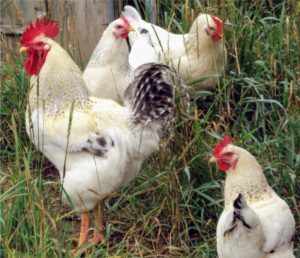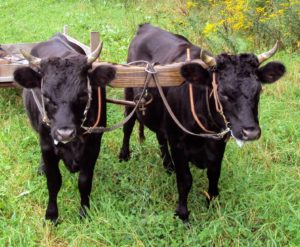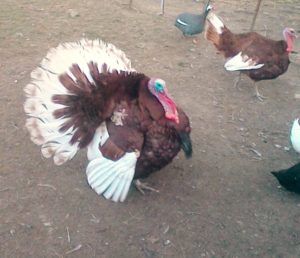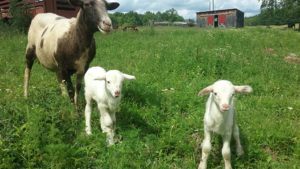Have you heard of livestock being called a heritage breed? Have you ever wondered what exactly that meant? Is it a buzzword, or something that matters? Most importantly, could they be a good fit for your homestead?
Simply put, a heritage breed has been around for a long time and was generally developed in a particular place for a certain purpose. Many do not do well on factory farms and are literal danger of going extinct. This is not an exaggeration, as half of the breeds in Europe in existence in 1900 are now extinct, with many more at risk of following suit in the next 20 years*. And because they do not do well on large farms, many times the qualities they do have make them a perfect fit for homesteads or family farms. In fact, these are their natural habitat, and it is the loss of this habitat that puts them in such grave danger. While we tend to think of exotic animals like elephants and tigers when we think of endangered animals, it’s hard to do meaningful work to save them. Some breeds of livestock, like the Silver Fox rabbits I raise, are so rare that there are fewer of them living than Giant Pandas*. While that’s a sad statistic, it means it’s possible for small farmers and homesteaders to make a big difference in helping these wonderful breeds survive.

Delaware chickens are a great dual-purpose heritage breed.
Some breeds are adapted for heat, others for cold. Some are best for meat, while others excel in providing eggs or dairy. Many have an easier time reproducing naturally & have superior mothering instinct, or are more docile, are better foragers, or hardier than industrial breeds. Not every breed will do well on your particular farm, but if you make a list of what traits are important to you, it’s very likely that you’ll find a heritage breed (or several!) that fits. These traits are a result of calculated breeding over many generations, and often a genetic difference from the rest of their species. Many heritage breeds are also dual-purpose. While Delaware chickens were the meat bird of choice in the 1940’s, today they are raised for their large brown eggs as well as meat. Dexter cattle can provide a nice amount of rich milk for a family, but also make a nice beef carcass. They are actually advertised as tri-purpose cattle, as they can be trained as oxen for draft animal power as well!

Maude and Belle, our two Dexter oxen-in-training.
This genetic difference is one of the things that is so important about preserving heritage breeds. Industrial breeds often use artificial insemination and focus on the bloodlines with the highest production. This can lead to an inbred group of animals, making them all very susceptible to be affected by a particular disease or change in climate. Relying on only one variety of potato was a major cause of the Irish Potato Famine, and reliance on a single breed of milk or meat animal could have similar consequences. Currently, only 14 breeds provide 90% of our animal products in the worldwide food supply*. Having many small, but genetically different, groups of animals makes it less likely that one problem would affect most animals.

Gobbles, our always-impressive Bourbon Red tom turkey.
These genetic differences also mean a wide variety of type, size, coat and color. Many have unique and endearing appearances. Our Silver Fox rabbits have fur that will stand on end when petted the wrong way which is unique among all rabbit breeds. Our Bourbon Red turkeys are eye-catching with their chestnut-brown and white feathers and will go broody and hatch out poults unassisted. The Dexters are the smallest non-miniature breed of cattle and require less feed than larger breeds.
And while heritage breeds are a real and important thing, they are somewhat trendy as well. Labeling your products as being from heritage breeds can attract new customers to your farm stand or farmer’s market. You may be able to get a premium price from restaurants catering to a foodie crowd. For many of these folks, they are jumping on a bandwagon without a clear understanding of what that means. I find sharing the stories of the individual breeds we raise, along with why they matter, is often very interesting to our customers. It’s also valuable in explaining how what we offer is different than the inexpensive meats in the grocery store. At times, folks may be alarmed that they are purchasing a product from a rare breed, so it’s also important to discuss how these breeds survive best when they fill a job on the farm. Offering grass-fed beef means I have income to provide good care to my herd of Dexter cattle. Choosing which ones to process means I am keeping only the best examples of the breed to pass on their genetics, meaning I am helping to keep the breed healthy.

Katahdin sheep make great mothers and breed out of season. This is Cookie’s second set of babies in 2017!
Another way to boost your income is by offering breeding stock. If you are producing enough offspring that you can sell some high-quality breeding stock, people will travel. I’ve had buyers come from several different states, sometimes driving three hours or more one-way, to buy the animals I was offering because they were passionate about the breed and could not source stock locally. But it’s important to offer healthy, quality animals. Good stock means repeat customers and referrals. Bad stock not only loses you business, but in the long run hurts the very breed you’re trying to help save.
* Statistics taken from The Livestock Conservancy website, a non-profit organization devoted to saving rare breeds from extinction. They have lots of great information on heritage breeds if you’re looking to learn more. Profiles & pictures of all the heritage breeds we raise are available on our farm website.










